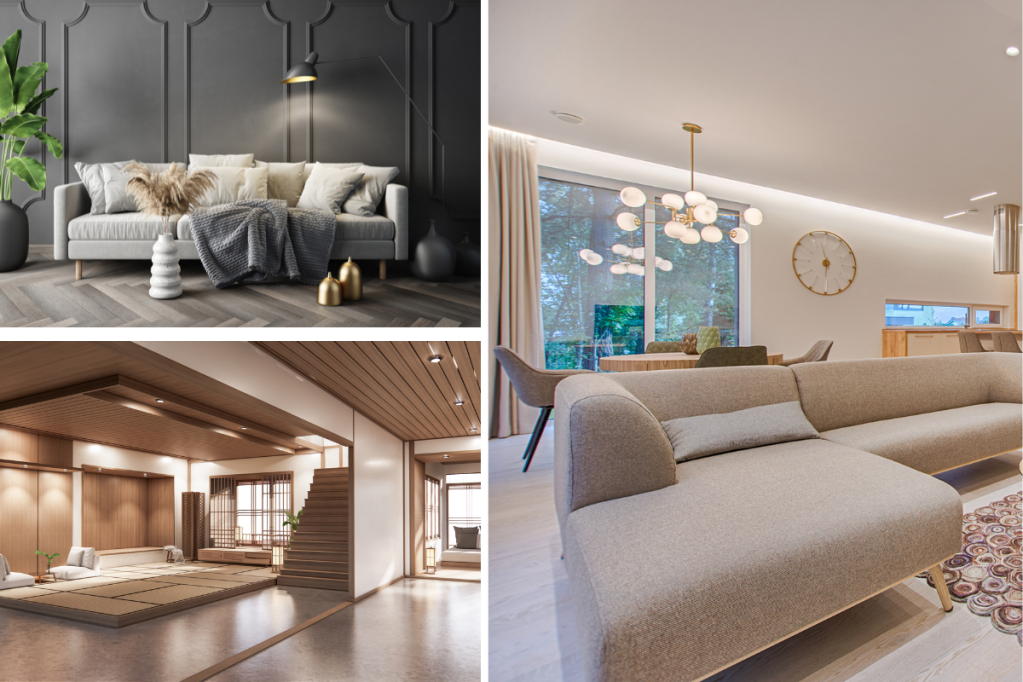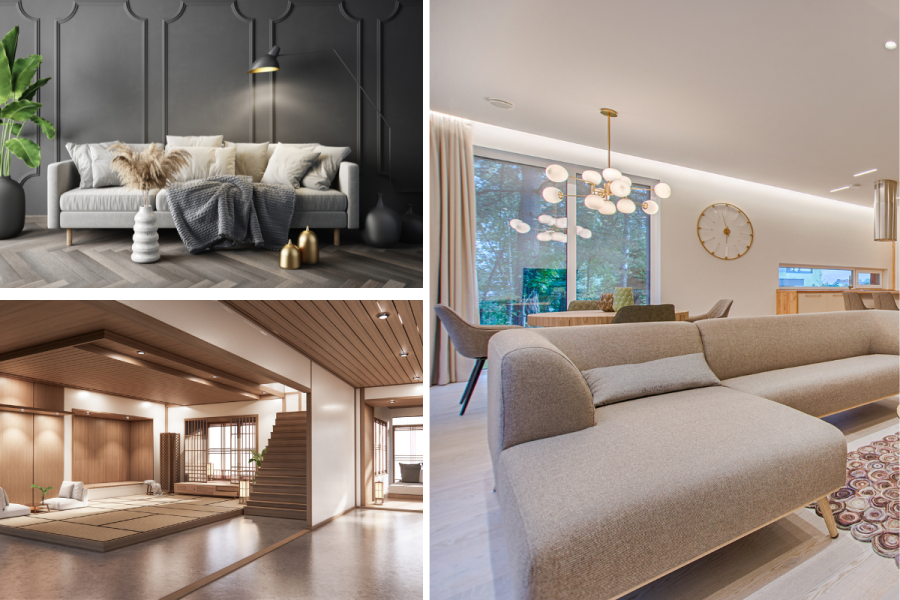
As space is a premium in Singaporean houses and the need for practical but fashionable living spaces is key, interior design is very important. The need for original and inventive interior design approaches has never been stronger due to the speed of urbanization. A home’s interior design may improve the beauty and practicality of the space, raise living standards, and even increase the property’s worth. Interior design is a crucial component of house ownership in Singapore, where the climate is hot and humid and may also improve inhabitants’ comfort and wellbeing. A well-executed interior design Singapore plan may significantly improve the quality of life for homeowners in Singapore, whether it is by establishing an open-concept living area, increasing storage capacity, or using sustainable materials.
Understanding the Role of Interior Design in Creating a Comfortable Living Space
The creation of a cozy living area that meets the requirements and preferences of the residents depends heavily on interior design. Every element of interior design, from color palettes to furniture arrangement, affects a home’s use and aesthetic appeal. Homeowners may design a room that is not only aesthetically pleasing but also practical and pleasant by recognizing the significance of interior design.
Space planning is one of the key principles of interior design, and it entails arranging the furniture and other items in a space to make the most of the available space. This may aid in establishing a welcoming, airy living area that encourages comfort and relaxation. A more pleasant living environment may also be achieved by optimizing interior design components including lighting, ventilation, and acoustics.
Utilizing color and texture is a crucial component of interior design. The appropriate color scheme and texture selection may provide a unified and peaceful atmosphere that reflects the personalities of the people. A well-designed interior should also take into account the residents’ tastes, hobbies, and way of life.
The Psychological Benefits of a Well-Designed Home Interior
The inhabitants’ mental and emotional health might benefit from a well-designed house decor. The psychology of interior design is predicated on the notion that our living conditions may affect our mood, conduct, and level of productivity. A well-designed home’s interior may provide a quiet, cozy, and comfortable atmosphere that helps lessen tension and anxiety.
The ability to provide a feeling of structure and order is one of the psychological advantages of interior design. The inside of a well-organized house might be less cluttered and more ordered, which helps lower stress levels. Additionally, components of home design like lighting and color help relax the body and mind.
The ability of interior design to foster creativity and productivity is another psychological advantage. A well-planned home office or workstation may boost attention and focus, which can boost output and efficiency. Additionally, introducing natural light and aspects of nature into the interior design may inspire and encourage creativity.
The Impact of Singaporean Culture on Interior Design Choices
Singaporean culture plays a significant role in interior design choices, with the cultural diversity in Singapore resulting in unique design concepts. The country’s multiracial population is reflected in interior design, with a mix of traditional and contemporary elements in home design. Chinese and Peranakan styles are popular in Singapore, with a focus on vibrant colours and intricate patterns. The Malay style is also prominent in Singapore, featuring natural materials such as bamboo and rattan, as well as batik fabrics.
Religion also plays a role in interior design choices in Singapore, with homes often incorporating religious symbols and elements into their designs. For example, Chinese homes may have altars dedicated to ancestors, while Hindu homes may feature shrines or statues of deities. These elements add a unique touch to Singaporean homes and reflect the country’s diverse cultural influences.
Singaporeans also prioritize functionality in their interior design choices, with a focus on creating practical living spaces that meet their needs. This is reflected in the design of HDB flats, which are designed to maximize space and functionality. The use of built-in storage, multi-functional furniture and space-saving designs are common in Singaporean homes, allowing for efficient use of space in small apartments.
The Influence of Climate and Weather on Interior Design in Singapore
Singapore’s hot and muggy weather has a big influence on interior design decisions made there, with an emphasis on creating cozy and pleasant living areas. Homes and public places often have air conditioning, which enables inside temperature control. Natural building materials like wood and stone may also keep a house cool and lessen the need for air conditioning.
In their houses, Singaporeans also choose light and airy designs with an emphasis on creating bright, open areas that encourage air movement. Singaporean houses often have large windows and doors, allowing for natural lighting and ventilation. Homes tend to seem bigger and more airy when light, neutral colors are used in the interior design.
The sorts of plants and greenery used in Singaporean houses are also influenced by the weather, with many choosing resilient, low-maintenance plants that can flourish in the country’s humid climate. In addition to bringing a touch of nature into living spaces, the use of plants and other greenery in interior design also helps to improve air quality and fosters a feeling of peace and relaxation.
Conclusion
A relaxing and practical living environment that encourages comfort, wellness, and relaxation must be created, and interior design is a crucial component of that process. Homeowners may build a room that expresses their individuality and satisfies their requirements and preferences by comprehending the many interior design components and how they affect a space. A well-designed interior space may also have major psychological advantages, including lowering stress and anxiety levels, fostering creativity and productivity, and instilling a feeling of order and structure. Therefore, it is crucial to give interior design first priority while making a place seem comfortable.
A relaxing and practical living environment that encourages comfort, wellness, and relaxation must be created, and interior design is a crucial component of that process. Homeowners may build a room that expresses their individuality and satisfies their requirements and preferences by comprehending the many interior design components and how they affect a space. A well-designed interior space may also have major psychological advantages, including lowering stress and anxiety levels, fostering creativity and productivity, and instilling a feeling of order and structure. Therefore, it is crucial to give interior design first priority while making a place seem comfortable.
